
AR-15 Buffer and Springs article is an excerpt from Gun smithing the AR-15: The Bench Manual by Patrick Sweeney.
The subject of buffers has been one of confusion for some years now. The use of buffers in rifles, particularly ARs with A1 or A2 stock assemblies, is simple. It’s Hobson’s choice — use the originals, because they haven’t changed and don’t need to be. The rifle buffer is the longer, two-flanged one. The rifle spring is the one with 41 to 43 coils. (Yes, you can and should count them, just so you know for sure and know what they look like.)
When it comes to AR-15 rifle buffer and springs, more is not better. You do not want a heavier buffer, and you do not need a longer or stronger spring. Regular readers of mine know the record: a rifle we encountered in a class had an “extra strong” spring that was so strong the rifle would not work. The spring had no less than 50 coils!
Carbine buffers have one rim, are shorter in length, with recoil springs sporting 37 to 39 coils. Despite the buffer being lighter and the spring being shorter, they are correct for use in telestock tubes. Actually, they work pretty well … when they work. When they don’t work, you need to tend to them. Carbines, unlike rifles, can benefit from some buffer improvements.
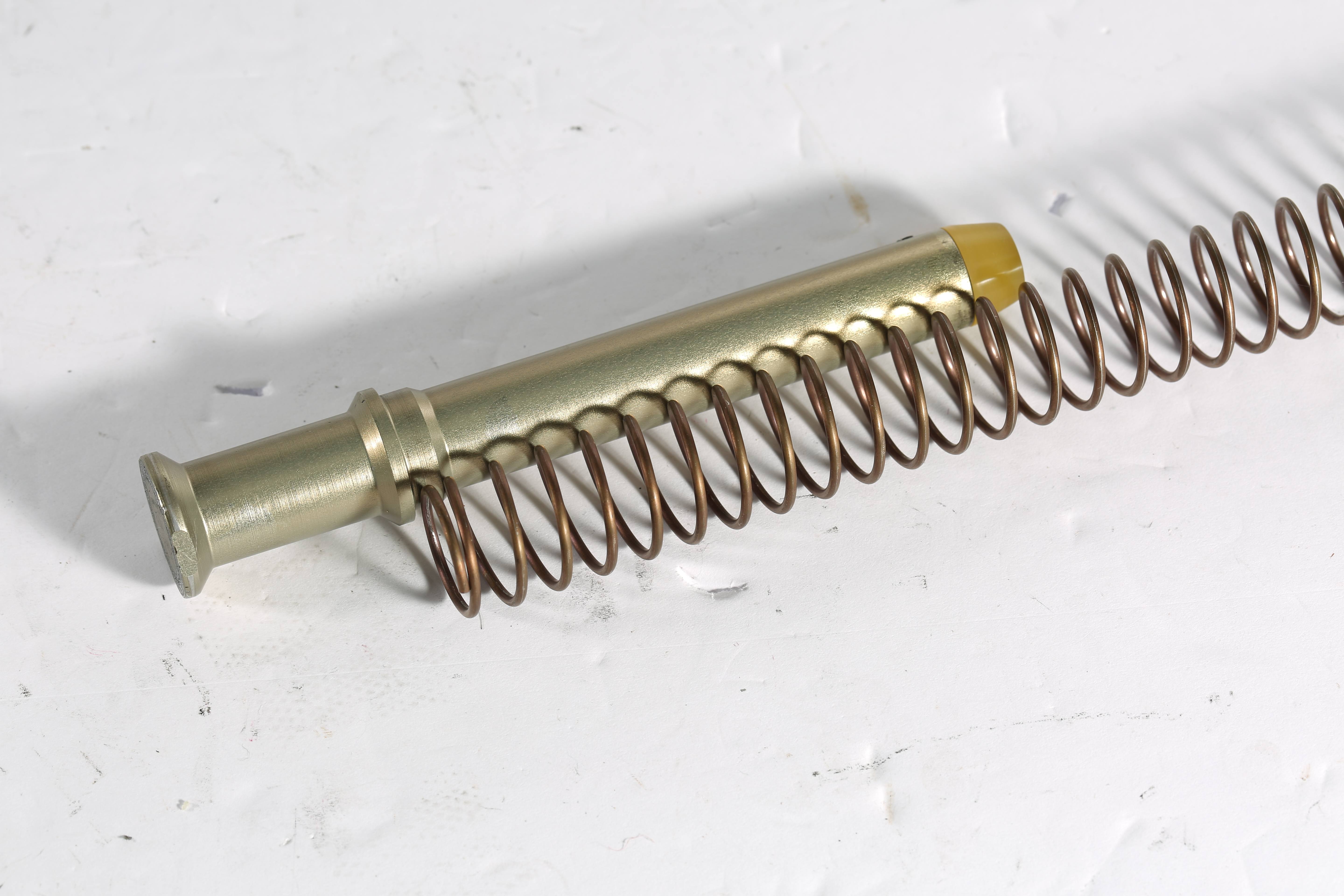
The buffer in both rifles and carbines is built as a dead-blow hammer. The weights inside are meant to rattle back and forth. When the bolt-carrier assembly closes, the carrier strikes the rear of the barrel extension. Steel-on-steel is a near-perfect elastic collision, and the result is a bouncing carrier. In semi-auto fire this does not matter as it is done several eons before your finger can press the trigger again. However, in full-auto fire, the autosear can release the hammer, bouncing the carrier as the hammer falls. If the hammer happens to come forward when the carrier has bounced, and is far enough back (it doesn’t take much), the bottom edge of the carrier prevents the hammer from contacting the firing pin. The result is the hammer resting on the firing pin with a loaded round in the chamber.
I had this happen in a class a few years ago. A Deputy from a nearby county arrived in our class (he wasn’t a student) with a malfunctioning select-fire SBR carbine. He had driven over from two counties away because his issued duty carbine was malfunctioning. After a brief description of the problem, I had him load and fire into the backstop. Sure enough, his rifle stopped. We opened it up, and yes, the hammer was forward and there was a live round in the chamber. I pulled out the buffer weight (standard carbine) and replaced it with an H3 marked buffer. He then did three full-mag dumps in full auto. Relieved, and with a grin on his face, he thanked me effusively.
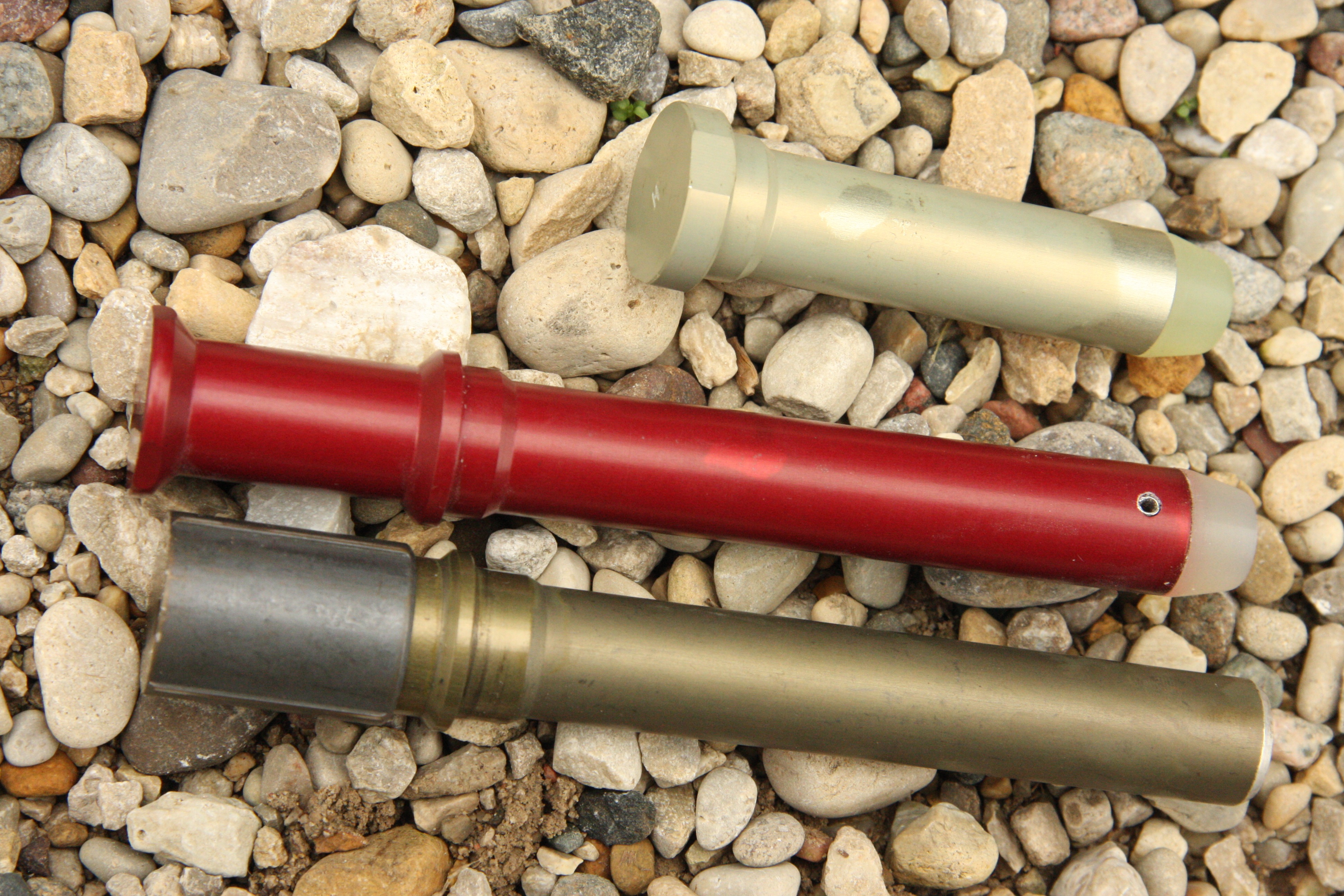
The weights inside are held to the rear of the carrier by inertia as the carrier goes forward, and then when the carrier stops, the weights move forward inside of the buffer an extra fraction of an inch and hit the inside front face of the carrier just as the carrier would be bouncing.
Again, for semi-auto work, this doesn’t matter. What does matter is that the weights are steel. When the carbine is a regular (more-or-less) 16-inch or so barreled upper, the steel weights work okay. However, if you shorten the barrel, install a suppressor, or do both, you have problems. Not bounce problems, but mass and inertia problems.
The shorter barrels need larger ports in order to deliver enough gas to the system in much shorter dwell time. This changes the timing and force of the gas arrival; many SBRs benefit from a heavier buffer. Buffers are made heavier at the manufacturer by substituting one or more of the steel weights with identically sized ones made of tungsten. One swapped weight is an “H” buffer, two swapped an H2 and all three an H3.
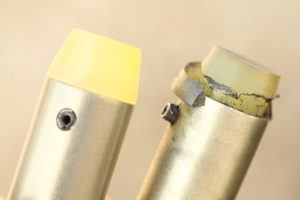
Generally speaking, if you have buffers to try, use the heaviest in your carbine, with the following limits: Use the lightest-power ammo you typically use, and keep your AR dirty and dry. Use the heaviest buffer that will still lock open in those conditions, when the magazine is empty. The brass will be less abused and you will feel less recoil.
A quick aside, the Army, as they are wont to do, re-invented the wheel by upgrading buffers and congratulated themselves for being so clever. They added a new buffer to inventory, with instructions on where, when and in what rifle or carbine to install it. They call it the H6 buffer. It’s comprised of six weights, each half the size and thickness of the regular weights and fits inside of the buffer assembly. I have been told they are packed in there so that they do not move and do not act as a dead-blow hammer. Time will tell if that particular aspect induces malfunctions.
If you have an H3, you have a buffer that weighs the same as the H6, but has the dead-blow attribute — so don’t go changing unless higher command orders you. The H3 is better than the H6.
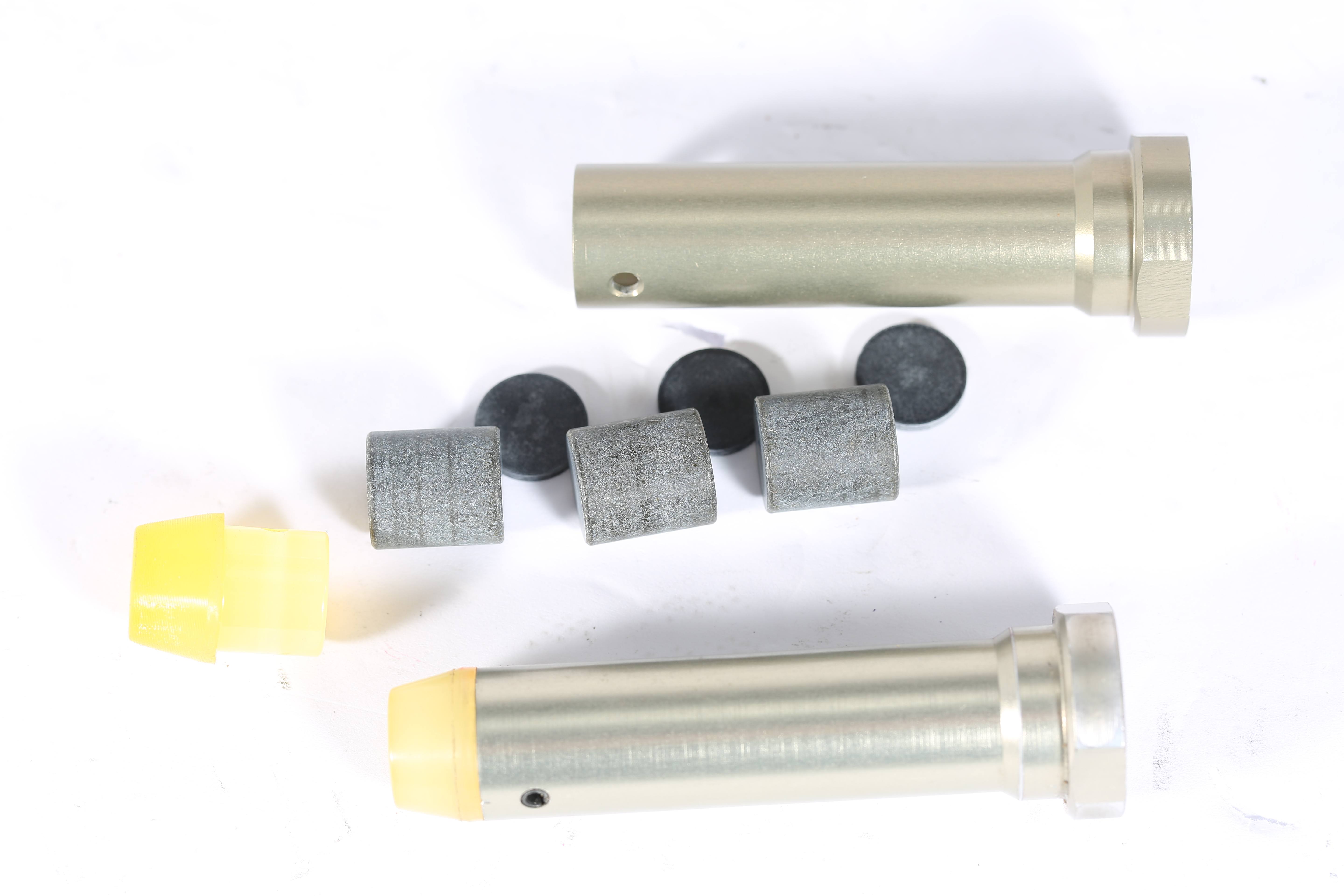
A special case is the pistol-caliber conversion, particularly the 9mm. Colt only ever made the AR in 9mm (no .40 or .45) so if you have a .40 or .45 you have something really off the beaten path. The Colt 9mm buffer is a special one, with extra weight added by means of a steel sleeve over the buffer body. The 9mm carbines and sub machine guns, or SMGs are not gas-operated, they are straight blowback, and need the extra mass to control timing and force of recoil. In a 9mm, the heavier the buffer, the better.
Buffers are made simply by lathe-turning rods of 6061 aluminum, anodizing, installing the weights and end cap. The synthetic cap keeps the buffer and tube from being hammered as the buffer weight bottoms out in the recoil stroke. The soft synthetic end cap is held in by means of a roll pin, and we have seen some of those pins work loose as of late. Check on your buffer occasionally just to make sure it isn’t one magazine away from disintegrating. (Trust me. That would be bad.)
While the relatively soft synthetic cap provides a bit of recoil relief, that didn’t keep people from improving it. The improvement comes in the form of a buffer, modified to have an internal or external spring on a shaft, which acts as a spring-loaded plunger. When the buffer bottoms out, the plunger soaks up more recoil while allowing the buffer mass to continue moving. This spreads the recoil impulse out over a longer period (measured in hundredths of a second, but still enough to notice) making the system seem softer in recoil. The total is the same, but the time is increased. Think of it as credit in monthly payments. The total cost is the same, but you get more time to deal with it.
So, what are the drawbacks? For one, such buffers tend to be lighter than the heaviest ones available. They provide a decreased recoil impulse when the system bottoms out, but do so with more velocity than they would have had with a heavier buffer. If the rod bends, or the spring wears or breaks, the advantage is lost. And they cost more than the standard and heavy buffers. Still, they do work. If you can feel the difference and are willing to pay the price, then go for it.
Bouncing springs
The buffer spring is full-diameter — it fills the aluminum tube in which it rests. Attached to it is a hard plastic stock. When the gun is fired, the cycling spring rubs against the tube, transmitting noise directly to your jawbone. One of the mechanisms of hearing is bone conduction. You hear things in part because your bones, being hard mineral structures, conduct sound relatively well. That’s why ear plugs do not offer as much protection as over-the-ear muffs do. The muffs cover some of the bone that would be conducting noise.

Well, the buffer tube conducts the noise directly to your jaw, and then to your ear. Some find the noise noticeable, even annoying. Others don’t notice it or their face offers enough dampening to keep bone conduction to a minimum. Yes, having a fat face can protect your hearing.
John Paul of JP Enterprises solved that problem by building a recoil spring along the lines of the spring-loaded buffer, but more. The entire recoil spring assembly is a captured system with weights and spring on a central rod. You do not need a buffer with this design as it has its own buffer mass built in.
Installation is easy. Open the upper and lower. Pull out the standard buffer and spring. Install the JP system with the weights to the front. Close, reload and continue.
Paul, not being one to leave things alone, improved it to the v.2.0 system, offering a .308 version.
The big advantage is no spring boing. The spring rides on its own central rod, thus it cannot contact the buffer tube — nor rub against it.
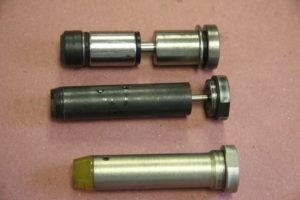
Buffer problems
Buffers may be durable but they do not last as long as carriers. The biggest problems are cheaply made or counterfeit buffers. I’ve seen them with mangled plastic backs made out of a cheap substitute polymer. (How can you get cheaper than plastic? They manage somehow.) For a while back in the 1980s and 1990s, we saw plastic molded buffers that were filled with lead shot. Those were awful. If you have one in a Colt (Colt even made and used them for a while, but not on military rifles), replace it and do not regret changing a factory-original setup. On this score Colt did wrong, and you should not suffer as a result.
One really egregious buffer I saw a while ago was made from lathe-turned heads (the nailhead-looking part) married to tubing. It probably would have worked fine except that the maker was even cheaper than cheap and didn’t use seamless tubing. The tube split on the seam, driving the plastic part into the buffer body until the weights inside stopped it. We had to wrestle that one out of the stock because it was binding on the spring.
Then there are those that are lathe-turned but not anodized. The faces that rest against the carrier on these get chewed to pieces in short order.
And who can forget the particularly craptasticbuffers that had a single steel weight inside. Yes, it clacked back and forth when you shook it, and caused the most spectacular malfunctions.
Quick check
To see if your rifle has the proper parts, unload, open it up, and pull the buffer and spring out.
Shake the buffer. Do you hear the weights clacking back and forth? Good.
If you hear shot rustling around in there, replace the buffer.
Count the coils. There should be 37 to 39 for carbines, 41 to 43 for rifles.
Editor’s Note: This article is an excerpt from Gun smithing the AR-15: The Bench Manual by Patrick Sweeney.

Next Step: Get your FREE Printable Target Pack
Enhance your shooting precision with our 62 MOA Targets, perfect for rifles and handguns. Crafted in collaboration with Storm Tactical for accuracy and versatility.
Subscribe to the Gun Digest email newsletter and get your downloadable target pack sent straight to your inbox. Stay updated with the latest firearms info in the industry.

![Best Concealed Carry Guns In 2025 [Field Tested] Wilson Combat EDC X9S 1](https://gundigest.com/wp-content/uploads/Wilson-Combat-EDC-X9S-1-324x160.jpg)


![Best 9mm Carbine: Affordable PCCs [Tested] Ruger Carbine Shooting](https://gundigest.com/wp-content/uploads/Ruger-Carbine-Shooting-100x70.jpg)
![Best AR-15: Top Options Available Today [Field Tested] Harrington and Richardson PSA XM177E2 feature](https://gundigest.com/wp-content/uploads/Harrington-and-Richardson-PSA-XM177E2-feature-100x70.jpg)
